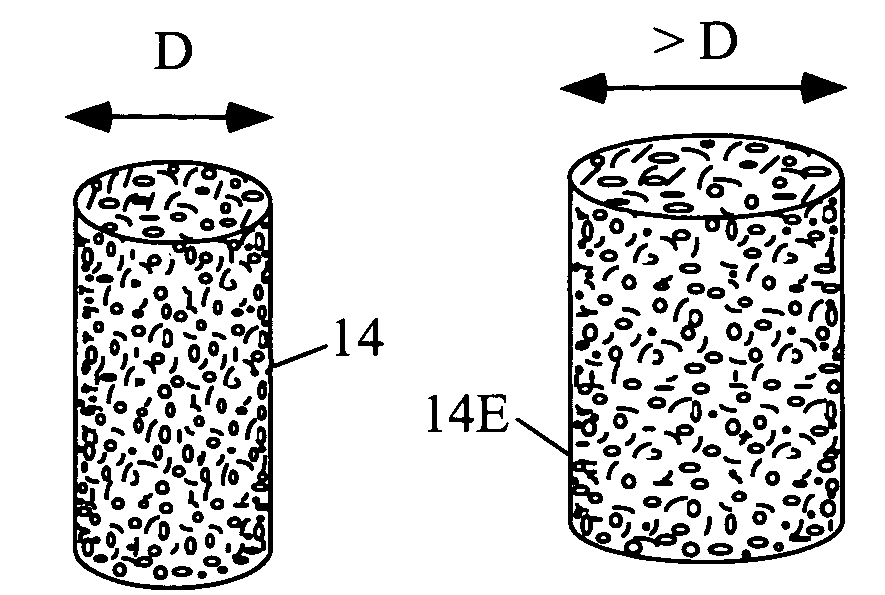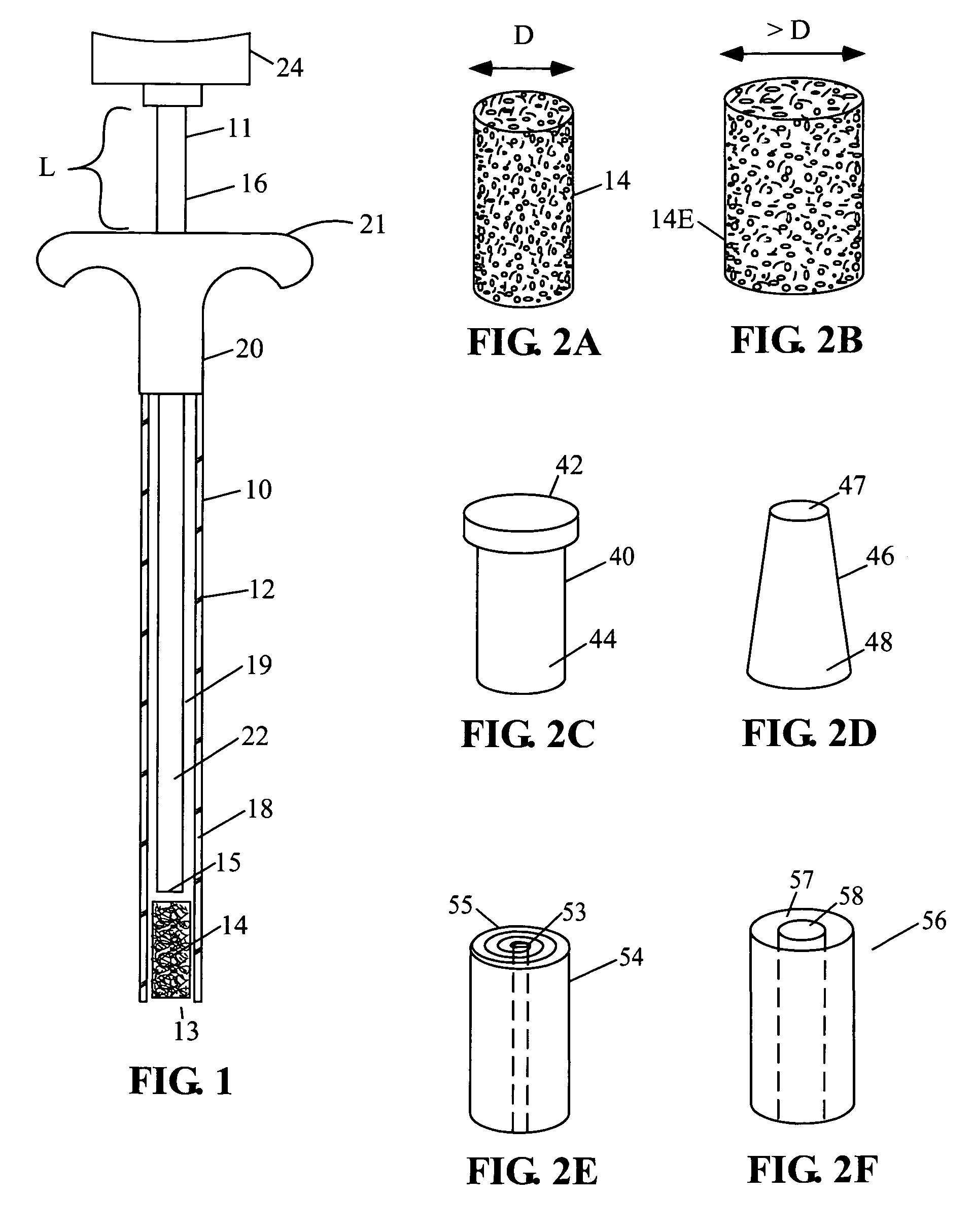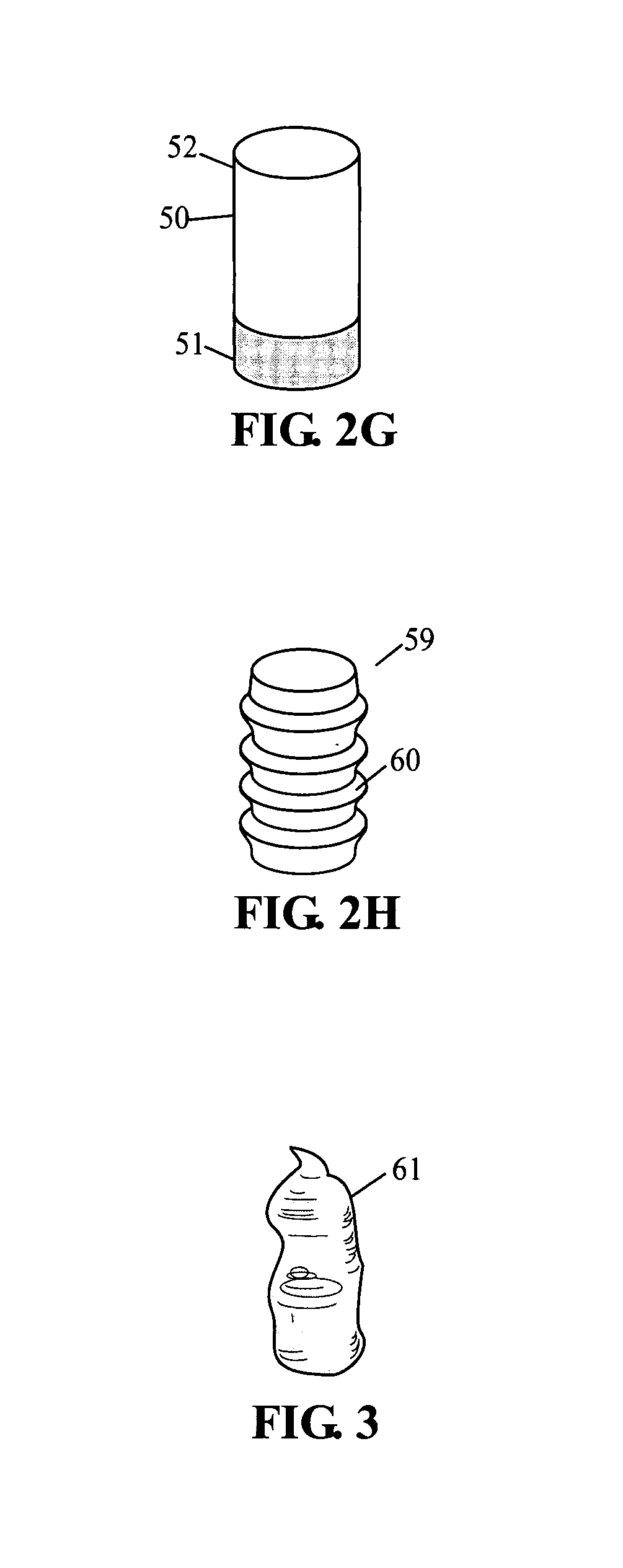Devices and methods for treating defects in the tissue of a living being
a technology of living beings and devices, applied in the field of medical devices and procedures, can solve the problems of reducing the strength of the graft, body is unable to repair such defects in a reasonable time, and cancellous bone grafts essentially provide minimal structural integrity
- Summary
- Abstract
- Description
- Claims
- Application Information
AI Technical Summary
Benefits of technology
Problems solved by technology
Method used
Image
Examples
Embodiment Construction
[0080]A preferred embodiment of current invention essentially consists of an implant comprising a tissue (e.g., bone, cartilage, soft tissue, etc.) substitute material and a method and system for deploying the implant. In general the implant of this invention is generally fabricated from one or more biocompatible materials (e.g. polymer, metal, ceramic) that will act to treat the wound and serve as a scaffold for the in-growth of tissue. The implant may contain a depot of material (e.g. calcium salts, collagens, cytokines, drugs, etc.) for assisting the in-growth of cells and act as a carrier for other constituents (e.g., see tables 2 through 7, and accompanying discussion, etc.) of the invention which act to beneficially treat the living being in which they are implanted. Some embodiments of the invention also incorporate cells or other biological constituents for providing the basic building blocks for tissue regeneration.
[0081]Many materials can be used to construct the implant, ...
PUM
| Property | Measurement | Unit |
|---|---|---|
| pore size | aaaaa | aaaaa |
| diameter | aaaaa | aaaaa |
| outer diameter | aaaaa | aaaaa |
Abstract
Description
Claims
Application Information
 Login to View More
Login to View More - R&D
- Intellectual Property
- Life Sciences
- Materials
- Tech Scout
- Unparalleled Data Quality
- Higher Quality Content
- 60% Fewer Hallucinations
Browse by: Latest US Patents, China's latest patents, Technical Efficacy Thesaurus, Application Domain, Technology Topic, Popular Technical Reports.
© 2025 PatSnap. All rights reserved.Legal|Privacy policy|Modern Slavery Act Transparency Statement|Sitemap|About US| Contact US: help@patsnap.com



